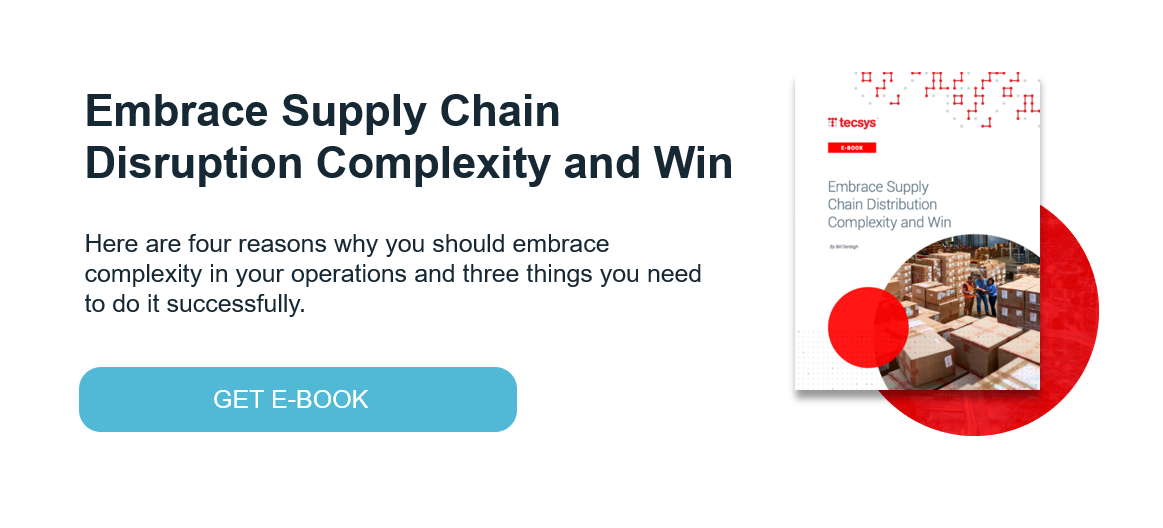Is Your Warehouse Ready for Omnichannel Distribution?

Many traditional warehouse operations are geared to fulfill orders coming in through a single channel — especially in the business-to-business (B2B) world. But customers are increasingly expecting to engage with organizations across multiple channels. In retail, it’s mostly in-store and online. However, in B2B it’s direct, online and electronic order releases. As a result, complex omnichannel distribution is gradually becoming the strategy adopted by both distributors and retailers.
The challenge is an omnichannel warehouse is different from a traditional warehouse in that it typically handles a high volume of incoming orders, coming from all directions — usually small orders from online, brick-and-mortar, and all other possible channels. In order to be successful at omnichannel, both distributors and retailers need to optimize warehouses and distribution centers to fulfill orders efficiently, no matter what channel they come through.
How to Prepare Your Warehouse for Omnichannel Distribution
Fully managing the variables of planning, products, suppliers and destinations can seem unachievable, especially when facing a high level of channel complexity and the demands of your customers. But trust me, this is not an insurmountable endeavor.
You must gain an understanding of the supply chain assets you already have and get a sense of what channels your customers are engaging with the most. From there, you can begin to make a strategic plan on how to achieve omnichannel distribution and the partners that you’ll need to enhance each channel.
Let’s take a closer look at each step to navigate your warehouse to this distribution strategy.
1. Gather the Data
What do I mean when I say, “Gain an understanding of the assets you already have?” I’m referring to all the places that you store inventory, this may be your current stores or regional distribution centers and warehouses, their locations, what each location can handle what in terms of storage capacity, your capability to satisfy orders, maximum pick rate, etc. It’s the nitty- gritty details you need to have outlined before you can create a roadmap. You also will need to add to your analysis things such as sales forecasts, future growth, peak periods, details of each item (size and volume) and finally don’t ignore the cost of order fulfillment at each point in the supply chain.
2. Make a Strategic Plan
The point of a strategic plan is to avoid the impact of inadequate solutions on your business, it must include major growth objectives, regional expansion, sales forecasts and product launches. If you create a plan with oversight over your entire operations, then you can keep all the pieces functioning well. Use the data collected in step one to map the flow of goods and costs through the supply chain needed to support the strategic plan. This will help ensure you have the capacity and profitability to manage omnichannel distribution in your warehouse operations today and into the future.
3. Select Technology to Connect It All Together
After you have your strategic plan, you can start investigating technology solutions that will support your omnichannel distribution strategy. You’ll want to ensure you’re implementing technology that helps your business function and grows, rather than fixing something that doesn’t meet your needs.
My advice is to build a technology framework into your strategic plan that addresses four critical areas of omnichannel distribution:
- Order Fulfillment: How are you going to capture and fulfill orders across a blend of channels?
- Order Management: How are you going to capture and manage the payment side of those orders?
- Warehouse Management: How are you going to manage products coming in and out of your warehouse?
- Transportation Management: How are you going to manage getting the order to the customer?
Look for solutions that help you gain flexibility and adaptability, which will help you respond to opportunities and changing market conditions. You’ll want to ensure your technology solution is capable of these four things:
- Interfaces with your existing ERP.
- Integrates with other third-party applications.
- Scales with your business.
- Customizable to your unique needs as an omnichannel distributor.
Omnichannel Distribution Is Vital to Your Future
Let’s face it, the 2020 pandemic has impacted the way we shop – and that goes not just for B2C, but B2B. Your business must merge your online and offline platforms if you want to keep your customers happy. As the need to modernize your distribution operations becomes more and more apparent, those with a progressive mindset will be ready to forge this next chapter.




